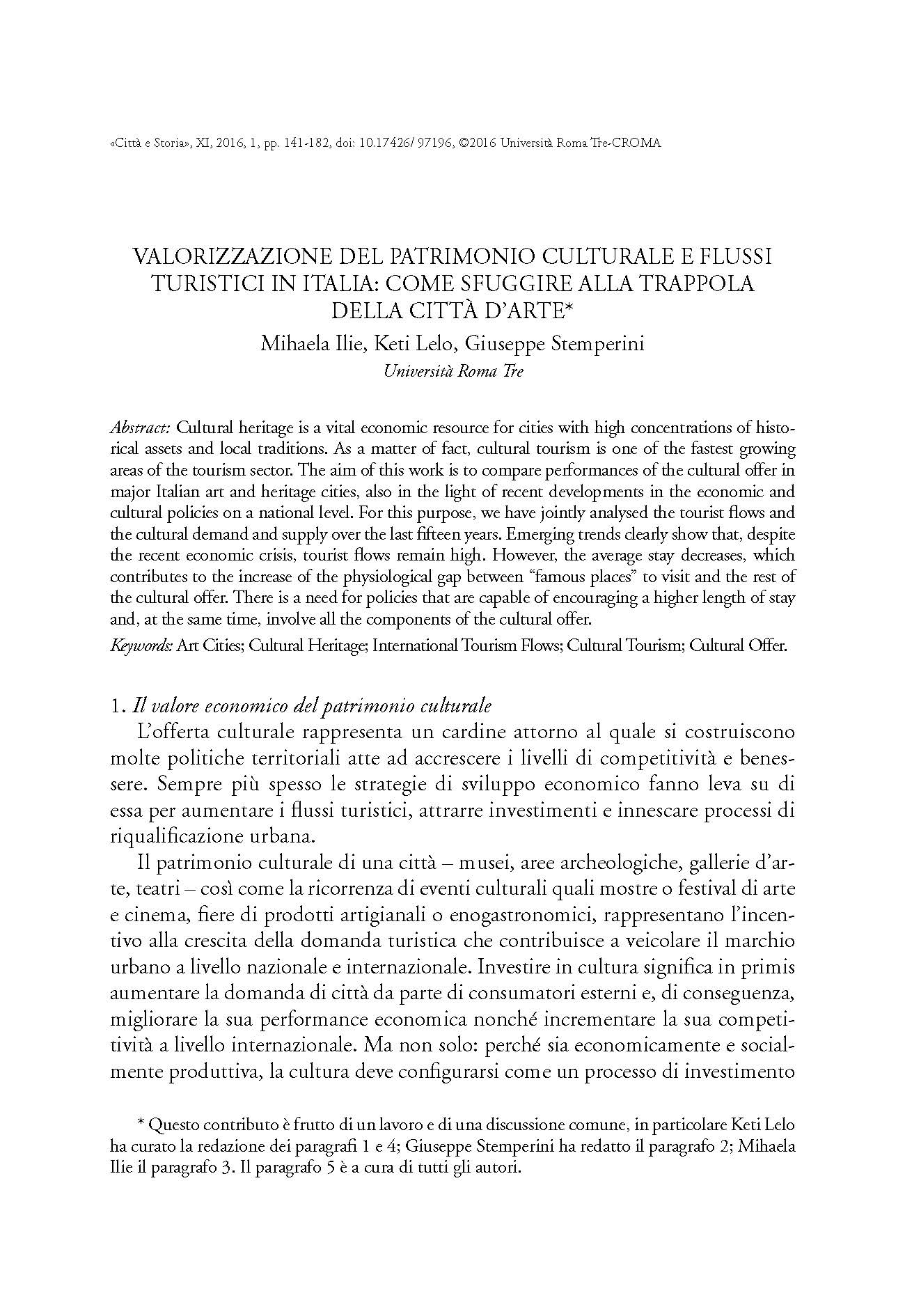Valorizzazione del patrimonio culturale e flussi turistici in Italia: come sfuggire alla trappola della città d’arte
6,00 €
Cultural heritage is a vital economic resource for cities with high concentrations of historical
assets and local traditions. As a matter of fact, cultural tourism is one of the fastest growing
areas of the tourism sector. The aim of this work is to compare performances of the cultural offer in
major Italian art and heritage cities, also in the light of recent developments in the economic and
cultural policies on a national level. For this purpose, we have jointly analysed the tourist flows and
the cultural demand and supply over the last fifteen years. Emerging trends clearly show that, despite
the recent economic crisis, tourist flows remain high. However, the average stay decreases, which
contributes to the increase of the physiological gap between “famous places” to visit and the rest of
the cultural offer. There is a need for policies that are capable of encouraging a higher length of stay
and, at the same time, involve all the components of the cultural offer.
Cultural heritage is a vital economic resource for cities with high concentrations of historical
assets and local traditions. As a matter of fact, cultural tourism is one of the fastest growing
areas of the tourism sector. The aim of this work is to compare performances of the cultural offer in
major Italian art and heritage cities, also in the light of recent developments in the economic and
cultural policies on a national level. For this purpose, we have jointly analysed the tourist flows and
the cultural demand and supply over the last fifteen years. Emerging trends clearly show that, despite
the recent economic crisis, tourist flows remain high. However, the average stay decreases, which
contributes to the increase of the physiological gap between “famous places” to visit and the rest of
the cultural offer. There is a need for policies that are capable of encouraging a higher length of stay
and, at the same time, involve all the components of the cultural offer.

